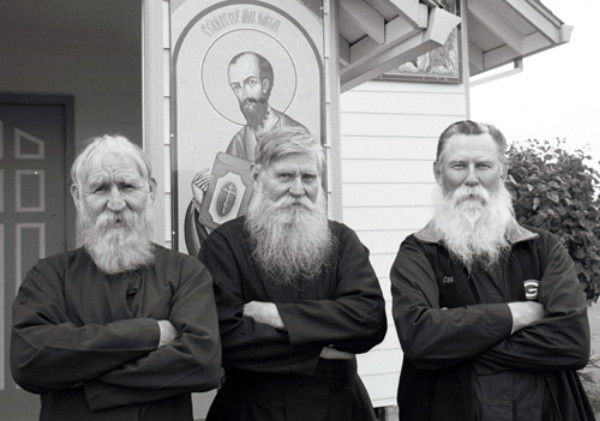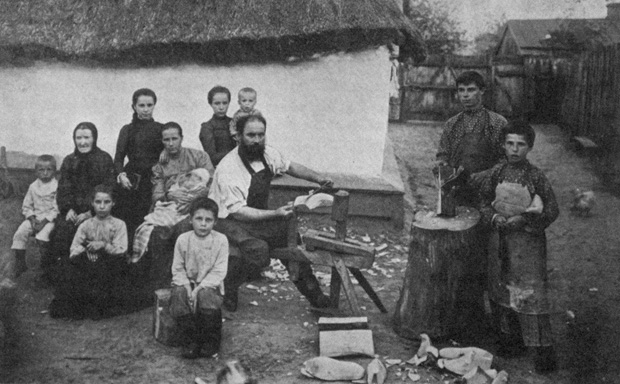Sects
Sects (секти; sekty). Religious bodies commonly formed as dissenting factions of a larger religious group and frequently regarded as extreme in their views and practices. A number of sects established religious communities in Ukraine, including various mystic and rationalist groups, offshoots of the Baptists, and groups splitting from the official Orthodox church. Although some individual groups had been active there earlier, the sects in Ukraine started becoming widespread in the 19th century.
The only indigenous Ukrainian sect to emerge was the Malovantsi, who were active in Kyiv gubernia in the late 19th and early 20th centuries. Ukraine, however, provided an attractive haven for sectarians fleeing persecution in Russia because it was outside the heartland of the empire. As early as the 1660s a significant number of Old Believers, the first large sect to emerge from the Russian Orthodox church, fled persecution by moving to Ukraine. Since Ukraine’s southern reaches were relatively unsettled, tsarist authorities were more likely to leave sects in peace if they were out of the public eye and performing a socially useful task (ie, colonization).
The most notable sects in Ukraine—the Khlysts, Doukhobors, and Molokans—had a common origin in the Tambov region of Voronezh gubernia. The Khlysts (also known as Khrystovoviry) arose in the mid-17th century at the same time as the Old Believer movement. Sect members started moving into Ukraine in the 1860s and established themselves in Kyiv gubernia, Podilia gubernia, Poltava gubernia, and Kharkiv gubernia as well as the Kuban. The Doukhobors and Molokans had their origins in a Khlyst offshoot, the Spiritual Christians. In 1802, after a period of persecution, the Doukhobors were allowed to settle along the Molochna River in Tavriia gubernia. This region soon became their largest settlement in the Russian Empire. The Doukhobors prospered there until the early 1840s, when 4,000 of their number were relocated by tsarist authorities to the Caucasia region. The Doukhobors were subjected once again to persecution in the late 19th century, and more than 7,000 emigrated to Canada in 1897–8 under the leadership of P. Veregin. There they settled in east central Saskatchewan adjacent to an area colonized by Ukrainians. The Molokans were formed in the 18th century in Tambov gubernia by a former Doukhobor. Because of their pacifism, members of this sect frequently came into conflict with state authorities, and throughout the 19th century groups of them were exiled to Caucasia, Siberia, and the Volga and Amur regions. By the beginning of the 20th century there were approximately 1.2 million Molokans in the Russian Empire, many of whom had settled in Southern Ukraine.
Various denominations of Evangelical Christians, most notably the Baptists, emerged in Ukraine during the 19th century as an offshoot of the German colonization in the region. Although these Protestant-based movements were regarded by tsarist authorities as sectarian, they were tolerated among the German colonists. When they began to emerge among Ukrainians through the Stundists, efforts were made to eradicate what was regarded as a schismatic development.
The Soviet authorities were more openly hostile to religious sects than was the tsarist regime, particularly from the 1930s. Nevertheless, they did not eliminate sects, and a number were active in Ukraine and other parts of the former Soviet Union. The numbers of their followers were not known.
BIBLIOGRAPHY
Prugavin, A. Raskol-sektanstvo: Materialy dla izucheniia religiozno-bytovykh dvizhenii russkogo naroda: Bibliografiia staroobriadchestva (Moscow 1887)
Woodcock, G.; Avakumovic, I. The Doukhobors (Toronto–New York 1968)
Klibanov, A. History of Religious Sectarianism in Russia, 1860s–1917, trans E. Dunn (Oxford 1982)
[This article originally appeared in the Encyclopedia of Ukraine, vol. 4 (1993).]

.jpg)

.jpg)